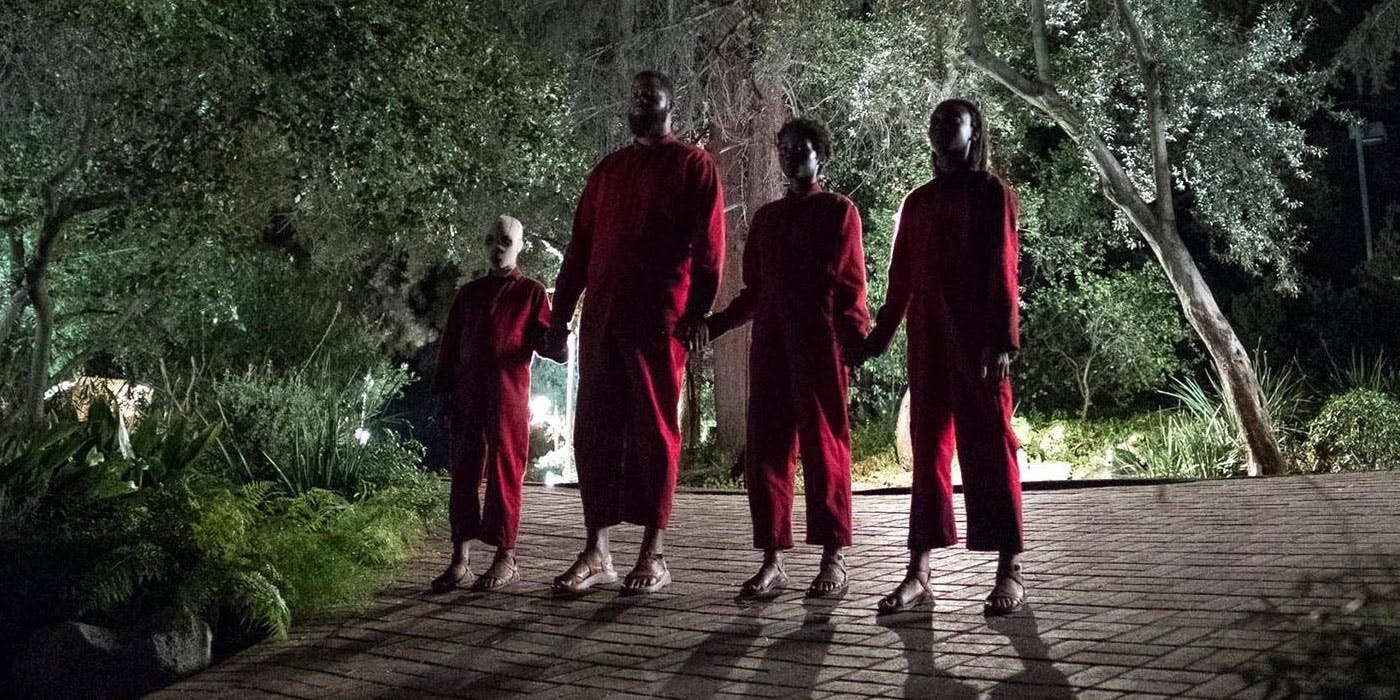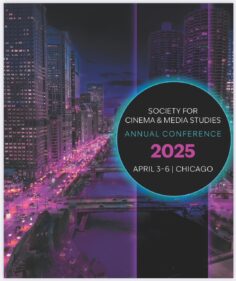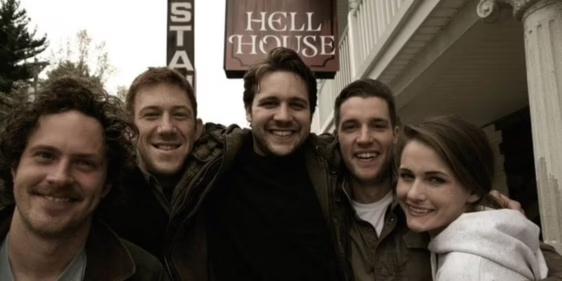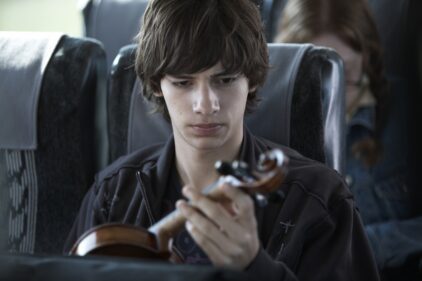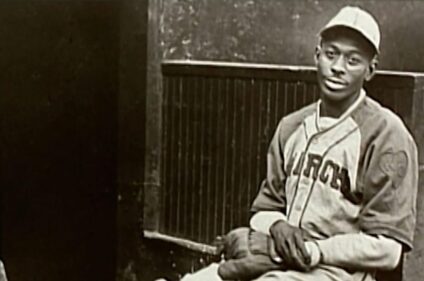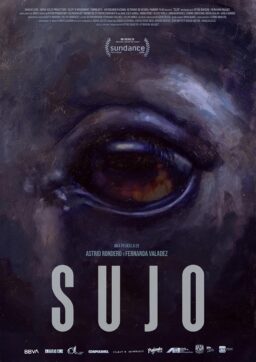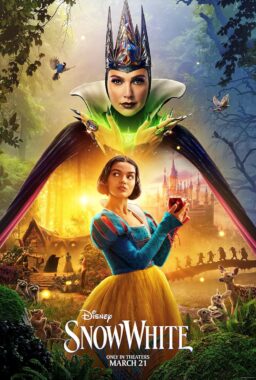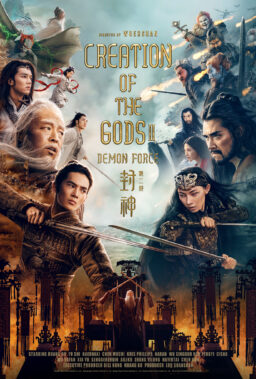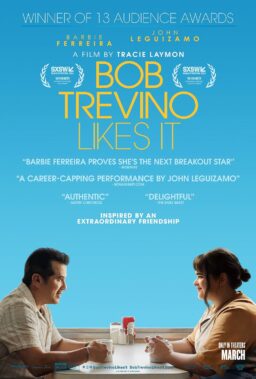In the opening shot of Jordan Peele’s “Us” is a curious invitation: A Rubik’s Cube, placed on the shelf just underneath a modest movie collection, is practically a winking acknowledgment by Peele of the appetite “Get Out” stirred in critics, scholars, and audiences to solve his movies. Such a sly visual joke eventually colors every perceived clue and incongruous detail in “Us” as both a startling revelation and an ever-growing punchline. While “Get Out” established Peele as an adept screenwriter capable of effortlessly reworking major social observations into symbolic visual language, “Us” firmly established him as a puzzle master. It’s a reputation that has made his projects, whether he’s directed them or not, highly anticipated—yet has often flattened how he is perceived as a filmmaker.
Since “Get Out,” with greater and greater frequency, it has felt like Peele has needed to explain himself. But the premiere of “Us,” five years ago, marked a turning point for the director. Many wondered if Peele could come remotely close to matching the dexterity, impact, and influence of his culture shaking debut. “Us,” of course, not only received rave reviews, it set up even higher expectations for his third film “Nope.” Following that film’s unmitigated success—“Nope” became his third straight film to gross over $100 million at the domestic box office—it’s worth looking back at “Us,” not simply as the follow-up to “Get Out,” but as a standalone work that shaped the limited way we interpret Peele as an artist.
He is the shorthand for ‘Black Horror’. And with that title, he, along with those who have followed, have been boxed in by the expectations of the genre to be the emcee of our buried nightmares and our deepest fears, a shaman to explain the systemic horrors that have historically ailed us, the keeper of a code to be cracked for its importance rather than admired simply for its pure ability to thrill.
It’s why I hesitate to return to the Rubik’s Cube: After all, to place further emphasis on its meaning, would make me guilty of the same fever to strike symbolic gold from what could be a mundane choice. But return to the Rubik’s Cube I must: Consider how a television envelops the entire opening frame, until the camera pushes so far into its reflection that a young girl, Addy (Maddison Curry), is revealed sitting with her doll, a bunny. The year is 1986, and a commercial plays informing her and the viewer about “Hands Across America,” the misbegotten fundraiser asking people across the country to lock arms in a bid to fight hunger. Nestled around the television are VHS tapes of “The Man with Two Brains,” “The Goonies,” “Thursday Nites,” and ‘C.H.U.D.” (a sci-fi horror flick about mutated humans turned radioactive monsters living in the sewers). It’s worth noting that following the runaway success of “Get Out,” many critics and scholars used the films that influenced the director as an avenue to “explain” Peele and his arresting picture. Here, Peele is practically cutting them off at the pass, handing them a syllabus to solve the Rubik’s Cube of a narrative he has tantalizingly nestled in the lower shelf.
The viewer is further stoked to search the frame in the film’s second scene: Addy and her parents are now at the Santa Cruz Beach Boardwalk. The camera pushes in again, this time not toward the image of Addy, but to Addy herself. There are two barrettes in her hair (one is pink and the other is blue). Her father (Yahya Abdul-Mateen II) hands her a prize, a “Thriller” t-shirt he’s won from a carnival game, as her exhausted mother (Anna Diop) looks on. Addy is a keen, wide-eyed child. She takes in the sights of zooming roller coasters and loving first dates, passing a man holding a sign saying “Jeremiah 11:11” as she wanders toward the beach and into a funhouse. She whistles as she explores the woodland themed hall and is surprised when she hears her melody, slightly distorted, returned by an unknown source. She comes to what seems like a mirror, except only the back of her head is reflected. Her eyes in horror widen; her mouth drops agape—the film cuts to a collection of white bunnies trapped in a wall of cages.
Peele’s second film is a startling journey that, opposed to “Get Out,” isn’t readily an allegory for race. Decades after the funhouse incident, Addy (Lupita Nyong'o) is now a mother to Zora (Shahadi Wright Joseph) and Jason (Evan Alex) and a wife to Gabe Wilson (Winston Duke). The family live an upper-middle class dream, vacationing at a summer home that is nice, but just a tier below the luxe domicile belonging to their affluent white friends: Josh (Tim Heidecker) and Kitty Tyler (Elisabeth Moss) and their daughters Becca (Cali Sheldon) and Lindsey (Noelle Sheldon). The Wilsons’ lives are consumed by their daughter’s track meets and Gabe’s desire to buy a boat that’ll somewhat put the family on equal footing to the Tylers. For all intents and purposes, racial differences or issues of prejudice aren’t at all visible.
The seeming racial vacantness translates to the oncoming horror as well: One night Addy and Gabe notice a family bedecked in red jumpsuits forebodingly standing at their driveway. Each moves with lightning quickness and uncommon strength; barring a few differences—the boy Pluto wears a mask to hide the scarred burn marks on the lower half of his face—they are nearly identical to the Wilsons. None of them speak, communicating through grunting noises, except for their matriarch—Red (Nyong’o), whose voice is a low, raspy rattle mirroring the symptoms of Spasmodic Dysfonia. They are the tethers to the Wilsons, emanating from an underworld: They came about because of a failed cloning experiment carried out by the American government, and were abandoned when the tests proved futile. Their connection with their doubles, however, was never severed: The underworld tethers experience the same activities as their above-world brethren without the pleasure, forced into relationships, sex, and childbirth against their will. The strained interrelations initially appear to recall the conditions of chattel slavery until you realize that everyone in the world, including the white Tyler family, has a tether.
There is a coyness to Peele’s allegory, one relying on the uncanny: We discover through varying flashbacks that Addy is a tether; she switched positions with Red in the funhouse for a normal life, leaving Red to a life of subjugation. Ever since then, Red, a kind of messiah to the tethers, has been planning an all-out revolt. This is just one form of the uncanny—the uneasy familiarity of doubles—but there are others that reside in the symbolism of rabbits and aurally, from the tune Addy whistles to the modulated speaking voices of Addy and Red.

It’s in fashioning complimentary souls where Peele finds contemporary richness. “This iteration of the uncanny in ‘Us’ is an overt commentary on the ways that history overburdens possibility, allowing us to consider the ways that the film’s ‘two bodies tethered by a soul’ illuminates the racialized shadow structures that underlie agency, desire, and liberal subjectivity,” writes Amber Jamilla Musser in Between Shadows and Noise: Sensation, Situatedness, and the Undisciplined. Post Black Lives Matter, we can interpret the theme of liberal subjectivity, fused by a connectedness, to communal mourning: The senseless murder of one Black person at the hands of police is felt by all; the gruesome videos of their passing become experiences we can do little to insulate ourselves from, inspiring the kind of righteous public demonstrations by BLM that have hit on repeat over the last decade and have shadows in the revolutionary uprising depicted in “Us.”
A similar interpretation translates to the sense of double consciousness: There is the version of the Wilsons, a well-to-do Black family, that exists among their white friends, and another that has been buried so they might pass seamlessly into another class bracket. For the Wilsons, as opposed to the vain pro-capitalist Tylers, their tethers are an actualization of their racialized hidden selves. It’s a tenuous relationship dramatized by Nyong’o’s unparalleled performance as Addy/Red, particularly in the tumultuously climactic ballet shared by the two characters. Addy wildly swings a fireplace poker while Red makes smooth, fluid moments, slashing with her pair of golden scissors. During this tussle, Peele intermixes spasmodic flashbacks to an actual ballet performed by the pair’s younger selves: One effortlessly spins in the limelight while the other clumsily crashes against walls in the dank darkness. Notably, Peele films the present-day fight between Addy and Red using wide shots, which fully accentuates not only their disparate physicality, but how separate their consciousnesses have become.
Following the film’s world premiere at SXSW, “Us” garnered significant praise with some reservations. Many praised Peele’s sophomore effort for its ambition while acknowledging its unwieldy plotting. “It’s one thing for a movie to humble you by leaving you unsure about yourself and your place in the world; it’s another for it to leave you wondering what, exactly, a filmmaker is trying to use his formidable verbal and visual vocabulary to say,” panned Stephanie Zacharek for TIME Magazine. “As social commentary, it’s not as razor-sharp as Get Out. But it still feels like an exceptional accomplishment, mainly because Peele created a role that is a worthy showcase of Nyong’o’s talent,” observed Soraya Nadia McDonald for Andscape. Meanwhile RogerEbert.com awarded the film four stars: “Jordan Peele isn’t the next Kubrick, M. Night Shyamalan, Alfred Hitchcock or Steven Spielberg. He’s his own director, with a vision that melds comedy, horror and social commentary,” wrote Monica Castillo.

The complexity of opinions on Peele’s work have fueled a curious trend: the explainer piece. You’ve seen them. Heck, I’ve written a couple. Now, so many movies are followed by the compulsory “Ending Explained” features. “Get Out’ certainly didn’t begin that craze– movie Youtube channels have been an explaining board long before it jumped into written form. It is, however, notable that Peele did struggle with the conclusion of his landmark film. The original finale witnessed Chris (Daniel Kaluuya) incarcerated for the murder of the Armitages. Similar to what happened to “Fatal Attraction” decades earlier, test audiences rejected the ending, forcing Peele to conclude with Chris departing safely from the Armitages with Rod (Lil Rel Howery). Peele’s original ending, however, didn’t fade into obscurity. He included it during the end credits of the DVD/Blu-Ray release, replete with an explainer by him.
But an explosion seemed to occur in between “Get Out” and “Us”—written explainer pieces began popping up with regularity. Once again, this isn’t to say Peele’s work birthed this trend: Television recaps have often acted as explainers, and a quick search finds that Vulture first began cracking endings back in 2017 when it revisited Denis Villeneuve’s “Enemy.” The rise of the MCU also brought Easter Egg guides and examinations of post-credit scenes. Outside of television and movies, Ezra Klein’s Explained series was premised around taking complicated political and pop culture subjects and distilling them down to digestible talking points. Suffice to say, when “Us” arrived in 2019 the landscape was set. Unlike “Get Out,” which had a few explainers, mostly Peele talking about the symbolism and major themes in interviews, a wave of these articles seemingly sprung up with “Us.”
Because of the cultural success of “Get Out,” Peele’s filmmaker always seemed ready-made for this genre of writing. After all, white people love nothing more than having race explained to them. Here was a director versed in horror allegory and symbolism, capable of delivering big, bold observations of systemic racism, extralegal policing, forced assimilation, and erased histories in the graspable visual language of cinema. All of sudden you get writing deciphering bunnies, scissors, costume clues, the twist, and even the duality of man. I’m not here to say these aren’t worthwhile lenses to examine the film, but they make me hesitate. Unforeseen consequences arise when art is made definable. The work is not only flattened, but subjects like race, exploitation, animal rights, and so forth, are reduced to solvable equations while taking away the opportunity for critical thinking on the part of the viewer. Worst of all, we have devalued the filmmaker into a mere cipher.

Peele’s third film, “Nope” is seemingly fighting against being defined: OJ (Daniel Kaluuya) and his sister Em (Keke Palmer) are picking up the pieces after their father’s sudden death. The owner of Haywood’s Hollywood Horses Ranch—the family can trace their lineage to the Black jockey in Eadweard Muybridge’s Animal Locomotion—died from a nickel that mysteriously fell from the sky through his skull. At risk of losing the ranch, OJ and Em concoct a plan to photograph an unidentified shapeless creature that has been lurking above their farm. Peele never offers a backstory for the creature’s origins or for the many other strange occurrences (from why a monkey went on a bloody rampage during a sitcom or a TMZ paparazzo that stumbles through a climactic scene) that make up the picture.
The mania such ambiguities inspired was the only predictable element of “Nope.” Because if the explainer pieces for “Get Out” were a drip, then a wave for “Us”—they were a tsunami for Peele’s third film. Quite literally, everyone wrote an explainer. There was, of course, the symbolism of the standing shoe. Then there was the talk about UAPs. Then the conversation about Gordy the monkey. Then the “Scorpion King.” These aren’t unworthy topics. But they were all framed as tutorials for watching the film rather than as vehicles for discussing it. Part of that could be because of the changing expectations readers have for criticism: Readers want less priming for what they’re about to see as opposed to more material to understand what they’ve just watched. Explainers are how outlets have shifted to fit that need.
It would, of course, be a mistake to render Peele as passive. In interviews he does clearly take glee pulling the proverbial rug out from under audiences. And yet, similar to the Rubik’s Cube, “Nope” could be interpreted as a curious kind of troll. From the costumes, to the horse’s names, to the integration of the story of Eadweard Muybridge, the plight of Gordy, falling objects from the sky, and even more, Peele appears to be purposely overwhelming the viewer with clues, hints, and easter eggs for a postmodern barrage that, tellingly, stoked everyone to try to explain a movie about the unexplainable, about a quintessential element of existence that is nearly impossible to capture.
It’s therefore tempting to wonder if Peele, well aware of his rising reputation as a puzzlemaker following “Us,” took “Nope” as an opportunity to cause many to chase their tails, thereby allowing him to meet audience expectations while still focusing his art on his primary interest—how the sudden death of a parent brought two Black siblings closer together to have their talents recognized by the world—in a way that allows him to remain emotionally allusive. Outside of the context of his political beliefs, the director has rarely discussed how much his films derive from his personal life (for instance every work has dealt with either the loss of a parent or the unmasking of a parental figure) and even fewer have critically analyzed his pictures for their emotional heft.
It’s then worth returning back to how “Us” shifted our sense of Peele. When the film premiered, it did so with Peele holding a reputation as being a spokesperson on race. With “Us” he sidestepped and played with that assumption by offering a picture centering a Black family dealing with the aftermath of Reagan’s America while also commenting on privilege, capitalism, and social hierarchy through the film’s supporting white family. Peele flexed the power he earned with “Get Out” to push inquisitive audiences into a frenzy, becoming one of the few auteurs capable of still inspiring watercooler talk—making the Nyong’o vehicle a testing ground for the influence he would fully wield with “Nope.” In that way, much like the opening Rubik’s Cube, “Us” is both an incisive standalone work and emblematic of Peele’s artistic sleight of hand—by complexly making his films a reflection of us, he remains allusive.

